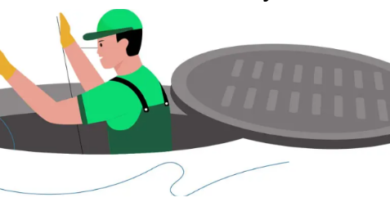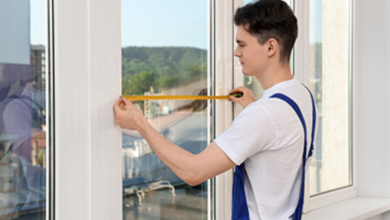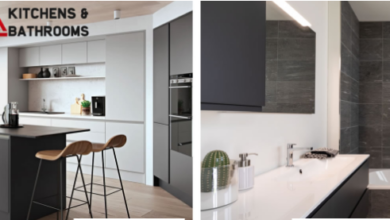Outdoor Furniture Buying Guide: Tips For Finding Quality Pieces

Going shopping for outdoor furniture is always an enjoyable but still quite daunting task. It doesn’t matter if it is a small backyard, a large patio, or even a balcony with stunning views; outdoor furniture can help add comfort to any area.
Yet, it does not mean that every bit of furniture intended for outdoor use is built to the same standard.
While buying furniture, it’s crucial that you keep several points in mind so that the furniture you are purchasing doesn’t deteriorate quickly or look worn out within a few years.
Therefore, in this article, we will discuss a few tips on how to identify proper outdoor furniture that will fit according to your lifestyle, withstand any climate condition, and enhance the aesthetics of the place.
1. Assess Your Outdoor Space and Purpose
Image source
Before you go out shopping for outdoor furniture, it is essential to evaluate the size, design, and usage of your outdoor area. Ask yourself the following questions.
What is your proposed use for the area? Are you looking for an eating area, a reclining area, or both?
How much space do you have? Will it allow extra-large items like sectional sofas or dining sets?
Will the furniture be positioned indoors or outdoors under the exposure of the sun, wind, or rain?
Is it for business purposes or entertainment purposes, or is it merely for self-use occasionally?
This will help you cut off on the options when selecting the furniture that you will require in the outside space. For example, if you are passionate about hosting parties, ample dining furniture or a sectional sofa for the patio will suffice.
On the other hand, if you are a book reader or someone who just wants to relax, a hammock, day bed, or a small seating area should be just fine.
2. Choose the Right Material
Image source
Outdoor furniture should be capable of surviving the climatic variations of sun, rain, and wind. The choice of fabric to be used in your furniture determines its durability as well as the amount of care required to maintain it.
Here are some common materials and their pros and cons.
1. Wood (Teak, Eucalyptus, Acacia)
One of the most common types of furniture for outdoor use is wood because it gives a natural feel to the furniture. Teak is more liked due to its ability to withstand weather and rotting factors.
However, there are affordable alternatives, such as Eucalyptus and acacia. Nevertheless, the downside of wood furniture is that it needs to be maintained to resist wear and tear, and for this, it must be polished or sealed to protect it from getting spoiled by water or heat.
Unpolished wood furniture may end up developing a silver-grey tinted finish, which some people find rather attractive if they let it grow.
2. Metal (Aluminum, Steel, Iron)
Aluminum furniture is durable, easy to carry, and does not easily rust, which makes it suitable for use outside. Steel and wrought iron are denser in nature and longer lasting; however, they may corrode and need a layer to protect them from rust.
The use of metal with a powder coat gives further protection against the natural elements, hence increasing the durability of furniture.
3. Wicker (Resin, Synthetic)
Synthetic wicker or resin wicker is the most frequently used material since it is lightweight, rugged, and weatherproof. It is designed to resemble natural rattan or cane and lasts longer when faced with outdoor weather conditions.
The standard features of the resin wicker include heat resistance, moisture resistance, and resistance to UV rays. Therefore, they are easier to maintain. Also, it goes well with cushions for a comfy and relaxed feel.
Selecting the appropriate material for outdoor furniture majorly depends on the climate of your area and your willingness to maintain it. For instance, metal and plastic may be suitable for rainy or coastal regions, whereas wood may be ideal for a temperate climate.
3. Comfort Matters: Cushions and Fabrics
It doesn’t matter what type of furniture you choose for your outside living area; it is essential to make sure that it is both comfortable and weather-resistant as well as attractive.
Look for cushions and plushies because the primary function of these products is to enable users to relax. Weatherproof fabrics such as solution-dyed acrylic, olefin, or polyester should be chosen for cushions and fabrics.
Such fabrics are produced in a manner to effectively prevent fading, mildew, and any form of moisture. Water-resistant cushions and foam fillings that can dry rapidly are best suited for use in an outdoor environment, particularly where the climate is wet.
Investing in UV-resistant textiles can prolong the vibrancy of the colors, and detachable cushion covers make cleaning and maintaining your furniture easier.
4. Check for Warranties and Return Policies
Image source
Ask about returns and warranties before completing your order. For your peace of mind, high-quality outdoor furniture frequently comes with a guarantee that covers flaws or damages.
To find out what is covered, such as fabric protection, rust resistance, or frame longevity, read the small print of any guarantee. Additionally, if you’re purchasing furniture online without physically seeing it, be sure the company has a fair return policy.
You may avoid buyer’s regret by having the choice to exchange or return items if they don’t live up to your expectations.
Bottomline
Selecting the appropriate furniture is the first step in creating an outdoor area that is both practical and welcoming.
Good outdoor furniture is essential whether you’re entertaining your family, lounging with a book, or spending an evening outside.
Are you prepared to improve your outdoor living area?
Explore your top outdoor furniture outlet today. Don’t wait—start constructing your ideal getaway now and enjoy endless seasons of comfort and luxury.




